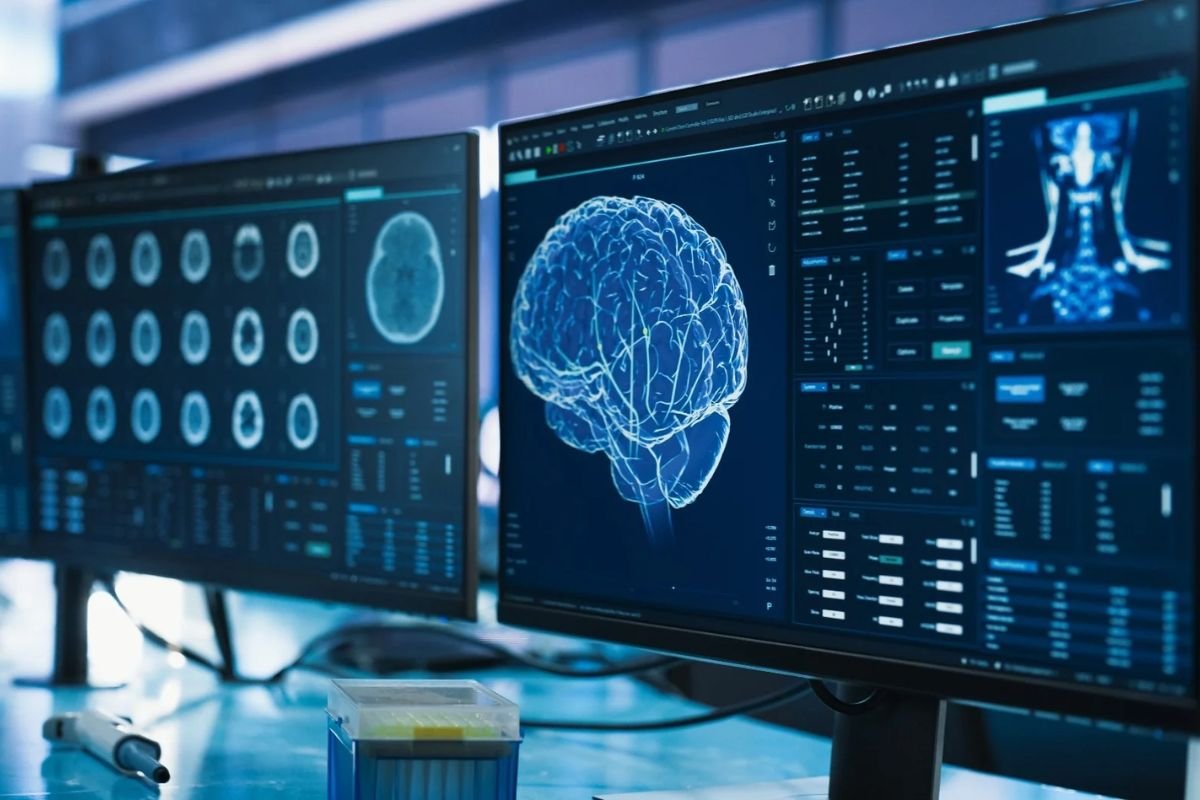In a groundbreaking study published in Nature Medicine, researchers have identified active immune cells in the cranial bone marrow, suggesting a more dynamic immune environment in the brain than previously understood. Historically, the brain has been considered an “immune-privileged” organ, with minimal immune activity due to the neuro-immune barrier. However, recent findings indicate that both innate and adaptive immune cells are present in areas like the choroid plexus, meninges, and dural sinuses, forming a critical interface between the central nervous system (CNS) and the rest of the body. This discovery challenges the conventional view, revealing that immune cells can indeed influence brain function and pathology, particularly in the context of malignant diseases such as glioblastoma.
The disruption of this neuro-immune barrier has been implicated in the development of glioblastomas, aggressive brain tumors with limited treatment options. Immune checkpoint inhibitors, a promising form of cancer immunotherapy, have shown limited efficacy against glioblastomas, possibly due to the brain’s unique immune environment. Systemic immunosuppression and various forms of immunotherapy resistance may prevent these treatments from effectively targeting brain tumors. The study aimed to investigate the role of immune cells in this context, particularly those residing in the cranial bone marrow.
Study Findings: Active Immune Cells in Cranial Bone Marrow
The study involved analyzing immune cell populations from cranial bone marrow samples of glioblastoma patients. These samples were compared with those from patients with non-malignant intracerebral conditions. The researchers utilized advanced imaging techniques, including CXCR4 radiolabeling combined with positron emission tomography-CT (PET-CT), to visualize and quantify the presence of immune cells, particularly cytotoxic T-cells, within the cranial bone and adjacent tumor tissues.
The findings revealed a significant concentration of active immune cells, including CD45+, CD4+, and CD8+ T-cells, within the cranial bone marrow of glioblastoma patients. Notably, high levels of CXCR4-expressing cytotoxic T-cells were observed in regions adjacent to glioblastoma tissues, suggesting that these cells play a crucial role in immune surveillance and response initiation. Interestingly, these T-cells were more concentrated around the tumor rather than within it, indicating that the immune response may be more active in the bone marrow environment. This suggests a possible mechanism by which the immune system attempts to combat the tumor from outside the tumor mass itself.
Further analysis revealed that cranial bone cytotoxic T-cells exhibited a higher degree of tumor reactivity compared to those found in the tumor tissue or peripheral blood. The presence of tumor-reactive CD8+ T-cells in the cranial bone, marked by sphingosine-1-phosphate receptor 1 (SRPR1), indicates a robust immune response that may be initiated within the cranial bone marrow.
Implications for Future Glioblastoma Treatment
The study’s findings have significant implications for understanding the immune landscape within glioblastomas and developing more effective treatments. The presence of a full spectrum of T-cell development, from naïve to fully differentiated effector cells, in the cranial bone marrow suggests a well-developed immune response in this region. This discovery could lead to new approaches in glioblastoma treatment, focusing on enhancing the immune response from the cranial bone marrow.
Moreover, the study highlights the potential of using CXCR4 radiolabeling with PET-CT imaging to monitor immune cell dynamics in glioblastoma patients, providing a novel tool for assessing treatment efficacy. While the study revealed a limited role for B-cells in the glioblastoma immune response, the findings on T-cell activity open new avenues for research and therapeutic strategies. Future studies are needed to further explore these immune mechanisms and how they can be leveraged to improve outcomes for glioblastoma patients.







